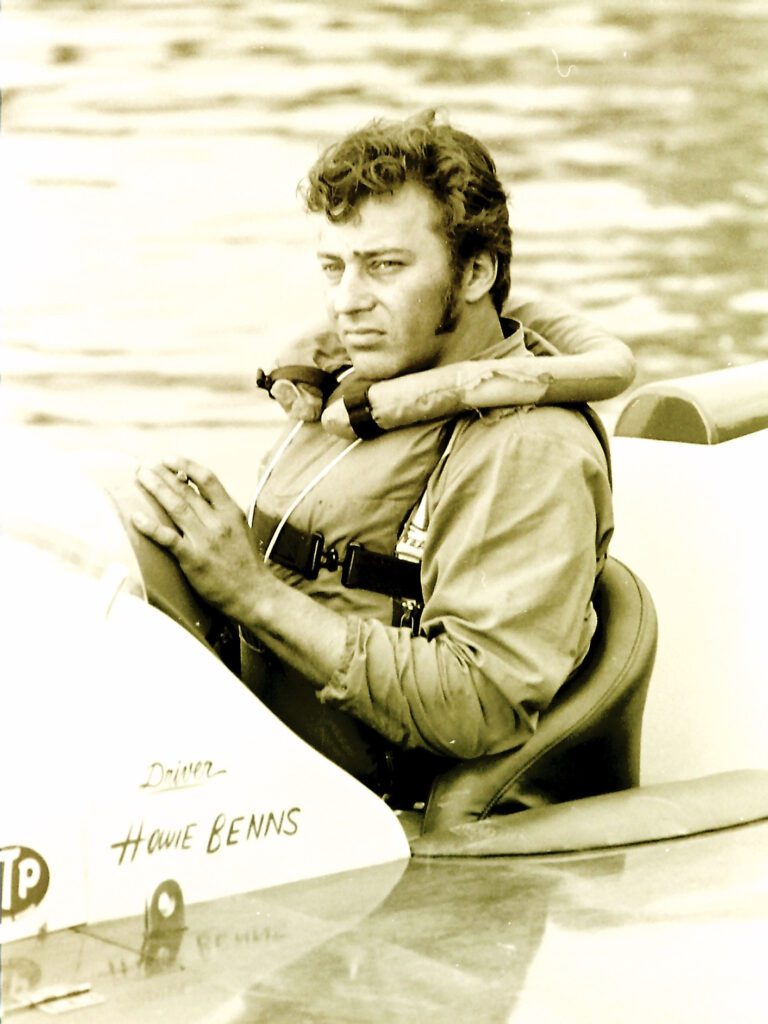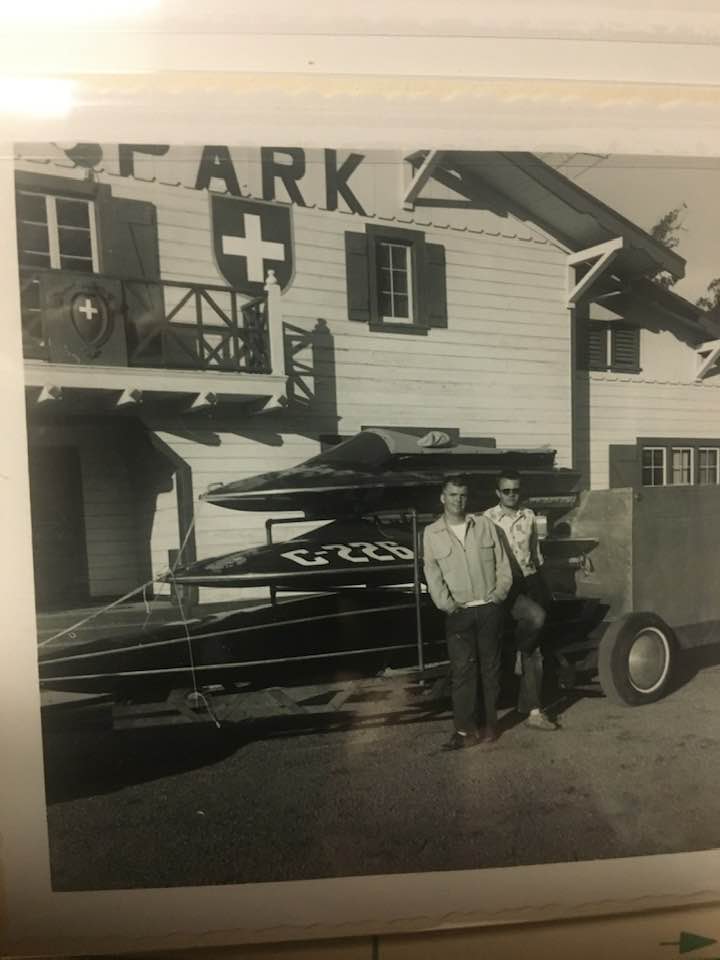Howie was for all of us an indomitable character. He was outspoken and never without words. His exploits on the racecourse are unparalleled. I don’t have the data, but would guess that the famous start to finish, nose to nose, wide open throttle, race at Valleyfield with JP Lessard may have more YouTube hits than any other boat race of all time. For those of us in the Vintage and Historic community, Howie was very special. He came to many events to watch and share good times. He had piloted many of our boats at one time or another in his long racing career, so there was more than just an idle connection.
I vividly recall when Howie and I were talking about boats at the Wolfeboro Vintage Regatta (he had driven mine, the Lauterbach Special GP-200), and he mentioned that APBA had awarded him a World Record for the Flying Quarter Mile but never recognized it. He had pursued several officials in APBA to no avail. I had asked him if he still had the certificate and for those of us who knew Howie his response was the characteristic “expletive YES”! I was surprised how much Howie resented the idea that he had the award and the record but not the recognition.
A backgrounder on Howie; his racing career opened in the early 1950’s in what was then Region 2, New York State. He drove anything with a motor that went fast. Flat bottoms were the key to his first National Championship, driving George Lang’s SK-401 “Chevy Too Much”.
In late 1972, Howie and six others, including his father, purchased the Lauterbach 7 liter Little Miss Budweiser. Included in the partnership were H. H. Benns (Howie’s dad), H. W. Benns (Howie that we know), Jim Schwab, Mickey Honszinski, Jim Spencer, Wally Eden and Pat Sacko. I can only imagine that it was a spur of the moment deal, and thus the name “Sudden Seven” was painted on the hull. Each of them came up with $2,000 and took ownership. Just to put that in perspective most of us only made about $6,000 a year in 1972. I have always found it too coincidental that the SS on the tail fin was the same stylized S found on a bottle of Seagrams Canadian whiskey. It carried a Henry Lauterbach pedigree as driven by Buddy Byers and owned by Bernie Little, so its history certainly recommended it. The boys, with Howie driving, went storming the circuit in 1972 and ’73, and then in 1974 Andy Miller took the wheel as Howie moved on to Unlimited, and by contract could not drive limited class boats. In each of those 2 years they sewed up the “H” (7 liter) class championships. Incidentally, they also won both Canadian Gold Cups with back-to-back victories on the punishing Picton Long Reach course.
So, to create a diversion from the torrid weekend after weekend campaigning with many long hours behind the wheel of the hauler, a group got together and decided to have a race on the nearby Erie Barge Canal at Marcy, NY. Now, I am not being negative, but if you know the Erie Canal, there is not a lot of room to be able to turn left, so it was decided it would not be a closed course event but a straightaway for the flying quarter. The canal at this point is only about 150 feet wide but a great, long 1 ½ to 2 mile straight. There was virtually no current in the canal, so it was ideal for a quarter mile challenge. They had it set up so the wind-up run was about a mile long before entering the traps for the time trial. At this point, they had a flying quarter surveyed and recorded so times could stand as potential records.
The crew that weekend consisted of all the owners and another great friend, Charlie Miller.
Everyone knew Howie was going to wind that big, old, bullet proof hemi up and fly just as hard as only he knew how. Well, needless to say, it was recorded as a world record. The then Chairman of the APBA, Bob Wanamaker was in attendance and signed the official record on the spot. Just to add a little more to the story, at the end of the course there is a very low bridge, which would normally be raised for passing ships. Howie just ducked and went under it with rooster tail flying. Somehow, I don’t think he radioed the bridge tender to raise the bridge.
Here is a photograph of the original record issued by the APBA. I trust you can all appreciate how much it would mean to Howie if after all these years, we can applaud his many accomplishments.
The Sudden Seven continued to be a force in the GP class for several years. After ’74, Howie was under contract to drive Miss Budweiser for Bernie Little, so the boat was sold to Canadian Bert Westgard. For the next few years, it ran as Canada Girl. Unfortunately, it suffered a beating when it made head-on contact with pilings in Cocagne, New Brunswick. It then spent several years at the top of a pole advertising the yacht club. It was burned after being removed from the pole. A Viking funeral pyre.
Charlie Miller tells the story that a group of them went to Cocagne to watch the races, and they asked Howie if he wanted to sit in the boat. They got a ladder and up went Howie. Charlie removed the ladder, and they left Howie sitting there for the next half hour or so. In spite of them being best friends, Howie wouldn’t speak to him for the rest of the weekend!
I hope as this short history circulates, more people who were at the flying quarter in Marcy come forward and share their stories.
APBA has always been a celebration of speed on the water, and our strength comes from our rich history. I find that sometimes things slip through the cracks as we speed forward to the next great race. We are always excited to be reminded of our history-making members, and I am proud to say that Howie Benns is one of those people. I love when we revisit our past and recognize how each of our pioneers reshaped our sport. – Chris Fairchild



















